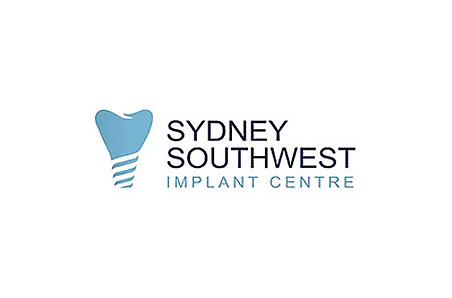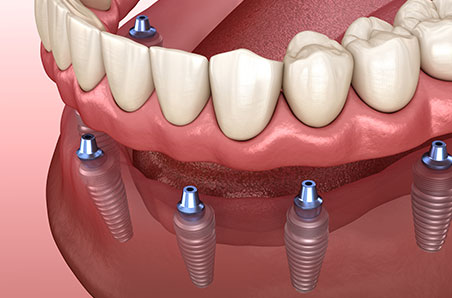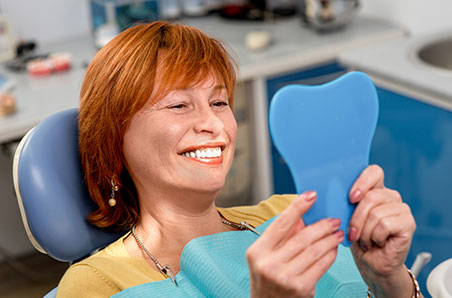
Sydney Southwest Implant Centre
We at Picnic Point Dental Clinic have a dedicated department (Sydney Southwest Implant Centre) for Periodontics, Aesthetic Implant Dentistry and Oral Surgery with Wisdom teeth Extraction.
Our Sydney Southwest Implant Centre is led by the our highly experienced clinical team to assure you that you are in safe hands. Our clinical team brings wealthy years of experience and success with his treatment protocols.
Our clinical team utilise their exceptional clinical skills along with their treatment philosophy and techniques to provide their patients with exceptional experience and predictable treatment outcomes. Our clinical team is always at the forefront of Surgical techniques and technologies in Implantology and Oral Surgery. Our clinical team conducts research with few universities around Australia, which proved to be a valuable experience in sharing the knowledge and skills.

Upon your first appointment or consultation, Our clinical team will gather a very detailed Medical & Dental history of every patient. Our clinical team will listen to your concerns and will carry a thorough clinical examination to assess every individual patient on a case-by-case basis.
Our clinical team will carry a series of diagnostics records ranging from, digital radiographs, CBCT Scans, Digital photographs, digital impressions, study models, occlusal assessment, periodontal health assessment to list down all problems that you suffer or can complicate our treatment plan. Detecting these problems early on before we start, is fundamental to predictable treatment outcomes and avoiding costly treatment later on, time wastage through unnecessary appointments and patient satisfaction.
Our clinical team will schedule another appointment where they will present to you all information and treatment options in an easy to understand language. There are two main reasons why dental implants could fail, the first being infection and the second being too much biting pressure. A thorough analysis of your dental history and present condition is critical to determine your treatment risk level, treatment suitability and prevention strategies. This is the first critical step in receiving quality dental care.

What is a dental implant?
A dental implant is an artificial root that is inserted into the jawbone to restore the aesthetic appearance and chewing function for patients with partial or full tooth loss. Dental implants can be used in either the upper and/or lower jaw and support the artificial teeth (crowns).
Implants are made from a strong titanium material that is biocompatible with the jawbone.
Once placed, the implant is allowed time to osseointegrate (attach to the bone).
A healing abutment (small artificial post) is then placed on top of the implant, which allows the soft tissue (gum) to heal around the area and form a collar to hold the final restoration (crown) in place.
During the healing process before the final restoration is cemented, a temporary artificial tooth is provided.
There are two main reasons why dental implants could fail, the first being infection and the second being too much biting pressure. A thorough analysis of your dental history and present condition is critical to determine your treatment risk level, treatment suitability and prevention strategies. This is the first critical step in receiving quality dental care.
What are the consequences of leaving a gap?
- Leaving a gap can lead to:
- Aged appearance
- Tooth shifting causing malocclusion (‘bad bite’)
- Bone deterioration
- Negative impact on diet
Call us today to make an appointment and experience the difference.
Digital Implant Planning/ Guided Surgery
Our clinical team utilises state of the art technology in planning the implant surgery for their patients through implant planning software. They then use a 3D printer to formulate a surgical guide for a specific patient case. This guide is used during the patient/s surgery to give an accurate placement with minimum complications. In some cases, Our clinical team even performs guided and flapless surgery on patients. This gives the advantages of minimum downtime for the patient and faster healing and comfort.
To see if this is an option, feel free to make an appointment to discuss this with our clinical team.
Call us today to make an appointment and experience the difference.
Single Tooth Implant
Replacing a single missing tooth is a simple procedure that is normally completed within 20 minutes.
A stand-alone tooth is created and the adjacent teeth will not be touched.
This procedure involves the placement of a single implant (titanium artificial root) and is restored with an abutment and a single crown (artificial tooth). The crown will be natural looking and matched to your existing teeth colour.
Call us today to make an appointment and experience the difference.
Multiple Teeth Implants
Implant Fixed Prostheses
If there are multiple missing teeth, implant-supported bridges can be used to replace them.
A bridge is a permanent prosthetic appliance that is created when a number of crowns are connected to each other to form one piece.
An implant-supported bridge is similar to a regular bridge, but it is supported by implants and not by natural teeth. Most commonly, only two dental implants are used to replace 3 to 4 missing teeth. This concept is also commonly used when a patient has lost all of their teeth to provide them with a third set of ‘teeth’. This option is as close as it comes to feeling like you have natural teeth again.
Not every crown (artificial tooth) within the bridge will need an implant. When multiple implants are required, they can all be placed during the same appointment.
This procedure involves the placement of multiple implants to which the healing abutments are applied and the final restoration is then completed with bridgework.
The crowns that make up a dental bridge are made from porcelain to create a natural, translucent, colour stable appearance.
An implant-supported bridge will give you a fixed, functional and natural feel that is not possible with other treatment options.
Call us today to make an appointment and experience the difference.

Full mouth rehabilitation
Full Arch Reconstruction
Due to root canal infections, tooth decay, loss of tooth structure, genetic factors, or severe form of gum disease, sometimes one’s teeth are beyond saving. In Modern dentistry, many options exist to replace all of the failed or missing teeth. These include but not limited to removable full dentures
Living with dentures is a thing of the past; in this day and age, there are treatment options available to replace teeth permanently.
A full arch reconstruction can be performed either when all teeth are missing, or when the current teeth need to be removed due to issues such as disease or decay. The procedure involves a certain number of implants (artificial roots) being inserted into the jaw bone, depending on the individual case. This can be performed during one appointment or over multiple appointments; depending on the patient’s request. Temporary teeth will be provided at this point to ensure functionality.
The final prosthesis (artificial teeth) will be permanently fixed to the implants. The artificial teeth will be translucent and colour stable, creating a natural-looking appearance. If ever required, this prosthesis can be removed by a practitioner.
A careful diagnosis of the reasons why teeth were lost in the first place is essential in order to avoid any failure with the “new set of teeth”. We believe the long term success of your restoration is a must and this can be achieved by carrying out a correct and accurate diagnosis and obtaining the highest level of treatment success which our clinical team pride themselves.
Some of the advantages of a full arch reconstruction over a denture include:
Smile, laugh and speak with confidence
No more removing dentures at night
No more ill-fitting dentures
You can eat the foods you want
Call us today to make an appointment and experience the difference.
Implant-supported Overdentures
Implants can be used to stabilise a denture.
The implants are placed into the jaw bone and once fully integrated, attachments are then placed to help support the denture.
The denture is still removable and must be removed at night and for cleaning.
Call us today to make an appointment and experience the difference.

Sinus & Bone Grafting
Sinus Lift (Sinus Augmentation/ Sinus Elevation)
A sinus lift is performed when the molars (back teeth) of the upper jaw are missing, or need to be removed, but there is not enough bone to hold implants in place.
When the sinuses have enlarged, leaving insufficient bone structure in the upper jaw, a sinus lift creates more vertical bone height for implant placement, allowing for a solid and stable foundation.
Sinus lift surgery raises the sinus floor and adds bone and grafting material to the upper jaw in the area of the molars and premolars (middle to back teeth). The bone is added between the jaw and maxillary sinuses, which are located on either side
of the nose. To make room for the bone, the sinus membrane is moved upward, or ‘lifted’.
Factors causing the above bone and sinus problems include:
Because of the anatomy of the skull, the back of the upper jaw has less bone than the lower jaw.
When the back teeth in the upper jaw have been missing for some time, the sinus cavity becomes larger (pneumatises) as the natural bone deteriorates and resorbs (absorbs back into the body) over time.
Bone may have been lost due to periodontal (gum) disease. To learn more about periodontal disease please click here.
The maxillary sinuses may be too close to the upper jaw as the shape and size of sinuses vary from person to person. They can also grow larger as we age.
Sinus enlargement/ cavity expansion:
Bone grafting or Guided Bone Regeneration (GBR) is a highly successful, safe surgical procedure that replaces missing bone in the jaw.
A bone graft (GBR) may be required before a surgical implant is placed. Some patients do not have enough healthy natural bone to support dental implants, so a bone graft is used to create a more solid base for the implant; ensuring long-term stability and functionality.
The bone grafting procedure can be performed using either the patient’s own natural bone from inside their mouth or using a synthetic bone material to build up or add to an area of naturally thin or soft bone. The grafted material not only replaces missing bone but also helps the body regrow lost bone. This new bone growth will strengthen the grafted area by establishing a bridge between the existing bone and the graft. Over time the newly formed bone will replace much of the grafted material.
Natural bone insufficiency can be caused by factors including:
- Gum disease & infection
- Spaces left empty in the mouth after teeth have been removed (long-lasting tooth loss)
- Facial injury or trauma
- Tooth development defects
- Wearing dentures long term
- Pneumatisation of maxillary sinuses (enlargement of sinuses by re-absorption of bone)
Complications
It is a fact that implant dentistry is one of the most successful procedures in the Medical & Dental fields with a success rate varying between 87-97%. Nevertheless, implant failures and complications can happen.
When dental implants fail, they need surgical intervention which involves removal, bone grafting and site preparation which is costly and time-consuming, let alone the emotional side of the patient. Therefore, we recommend carrying out thorough research when considering dental implant treatment.
Our Quality Promise
At SSWIC we only use the highest quality products from the world-leading brands in implant dentistry and approved Therapeutic Goods & Administration of Australia (TGA). Our clinical team works with Nobel Biocare, Straumann and Dentsply/Sirona and Klockner implant systems (European System manufacturer) which are benchmark systems all over the globe with a proven track record of more than 30 Years in clinical settings. Our clinical team researched more than 250 implant manufacturers around the globe and had certain strict criteria on the implant systems they use for the ultimate outcomes for their patients and predictable treatment success. They offer the latest engineering technology and work to meticulous specifications so we can ensure the very best for our patients. These implants are fully functional and very natural looking just like real teeth and offer long-lasting superior quality.
He is the current Clinical Consultant at the Klockner Implant System in Australia. Our clinical team perform all their Implant surgeries under a full-sterile protocol to maintain short- and long-term successful treatment for our patients and keep zero infection records in our implant surgeries.
Our implant crowns and bridges are always designed to connect to the supporting dental implants via screws to ensure easy retrieval and avoidance of residual dental cement.
All implant crowns and bridges are constructed of the highest international quality combined with the best aesthetics. All laboratory work is hand-crafted in Sydney by only the finest ceramists in the country under our clinical team’s protocols.
Please note, any surgical or invasive procedure carries risks. Before proceeding you should obtain personal advice from an appropriately qualified health practitioner.

